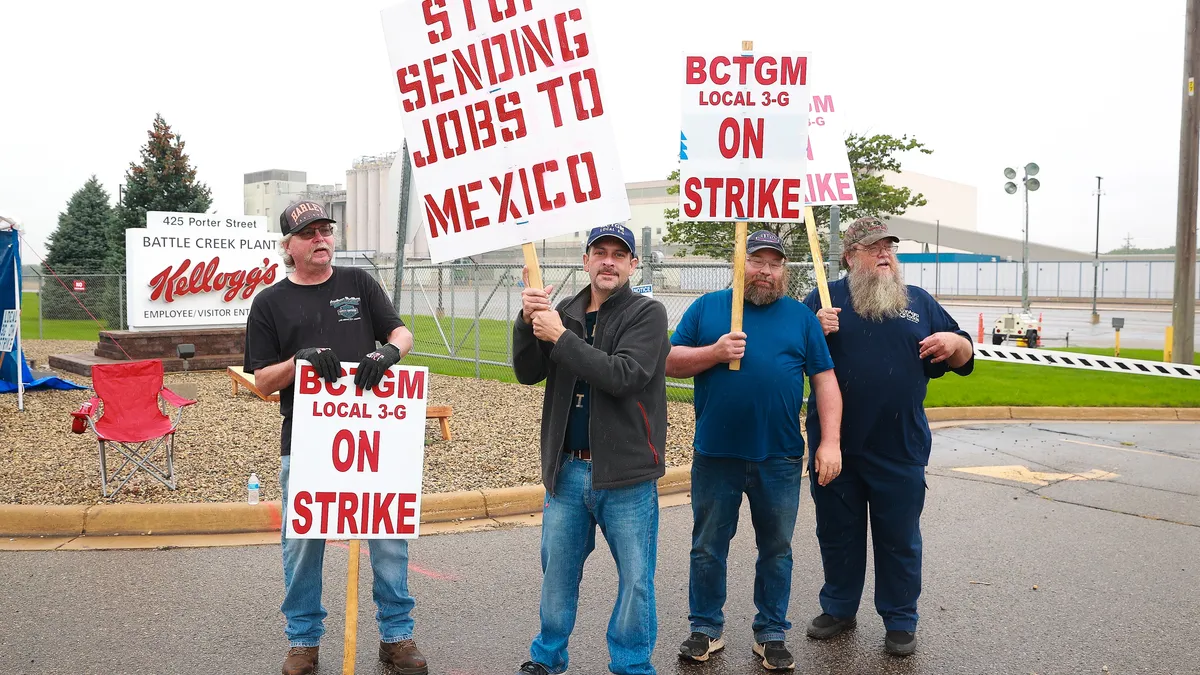The season of the strike is upon us.
Nearly 1,400 workers at cereal producer Kellogg Co. went on strike at midnight Oct. 5, as their union contract expired. On Oct. 14, close to 10,000 members of the United Auto Workers union at John Deere went on strike after rejecting a contract with management. At least 35,000 Kaiser Permanente nurses and other workers also joined the picket line in mid-October. And in reaching a tentative agreement with the International Alliance of Theatrical Stage Employees, Hollywood producers just barely averted a strike of some 60,000 workers in the entertainment industry, who voted overwhelmingly to authorize it beginning Oct. 18.
These are just a few of the bigger strikes that broke out in October.
The strikes and near-strikes are happening across the country — from Los Angeles up the West Coast to Oregon and Seattle; through the Plains states of Colorado and Kansas; across the Midwestern states of Michigan, Iowa, Illinois; and down South in Georgia.
What are workers demanding?
- At John Deere: "The ability to earn a decent living, retire with dignity and establish fair work rules," according to a press release from the UAW.
- At Kellogg: An end to the two-tiered system of "legacy" and "transitional" workers, which leaves the latter with a big wage gap, long workweeks, required overtime and poor holiday pay, according to Michigan outlet MLive. Strong healthcare and retirement benefits also are on the line, a press release from the Bakery, Confectionery, Tobacco Workers and Grain Millers International Union suggested.
- At Kaiser Permanente: Better efforts to address burnout and retention and higher pay, per an Insider report.
- In Hollywood: Better COVID-19 protection and more time off and meal breaks, according to the IATSE and a report from Variety.
In other words, unionized workers across the job spectrum, from nurses to manufacturers, are looking for many of the same things nonunionized office employees who are poised to quit say they want: flexibility, more time off and better pay.
For employees of movie sets and workplaces like Kellogg, demand for productivity and a talent shortage has left workers in reportedly grueling conditions, dealing with requirements like seven-day workweeks, exceptionally long workdays and no meal breaks.
The intense organized labor activity is likely a result of a unique confluence of elements, according to Bradford Bell, a professor of strategic human resources at Cornell University's Industrial and Labor Relations School.
"A lot of these workers have been on the front lines, have continued to work [in-person] through the pandemic under risky circumstances, working long hours," Bell said. "I think that combined with what we're seeing now in terms of the labor shortages ... really puts them in a unique position of power and leverage."
While many office workers have been given the flexibility to work from home and take time off, many front-line workers — as well as workers in other industries that require in-person work, like the film industry — have not experienced these same opportunities, Bell said.
Leadership often tends to prioritize those workers at the company who already experience more flexibility, safety and work-life balance in their work. A fast food corporation might afford a whole slate of privileges to its headquarters-based marketing team it doesn't extend to its front-line workers, for example.
"My own experience of talking with many organizations, as they've thought about the future of work, remote work, hybrid work, many of them are starting with or focusing entirely on their office-based employees," Bell said. "So I think that's probably created ... some disenfranchisement among those that are on the front lines that are maybe not getting these same types of opportunities for flexibility that they're seeing among ... their co-workers and other parts of the organization."
But as HR Dive has reported, plenty of office workers are feeling the burnout as well.
In his work with Cornell's Center for Advanced Human Resource Studies, Bell said he realized many organizations are focusing on their employee value proposition. Shaken up by the Great Resignation as well as the increase in strikes, companies are looking at "total rewards," he said. "Across the board, companies are starting to revisit these issues, to really think about how well they resonate with all employees and the extent to which [their value proposition] needs to be updated going forward."
What can business leaders learn from #Striketober? Employers can consider what flexibility they have in addressing worker burnout through better benefits and pay and more reasonable time-off policies. If their workers span a wide range of roles, they also might consider whether their focus on worker welfare is equitable.
Otherwise, they may see workers use the power they've come into.
















